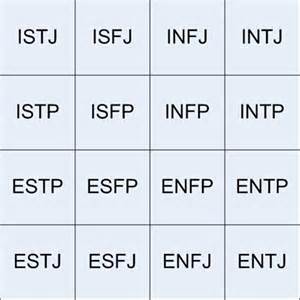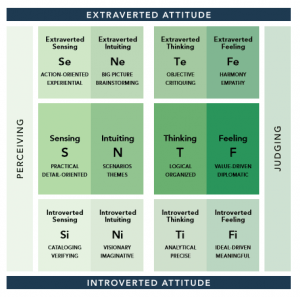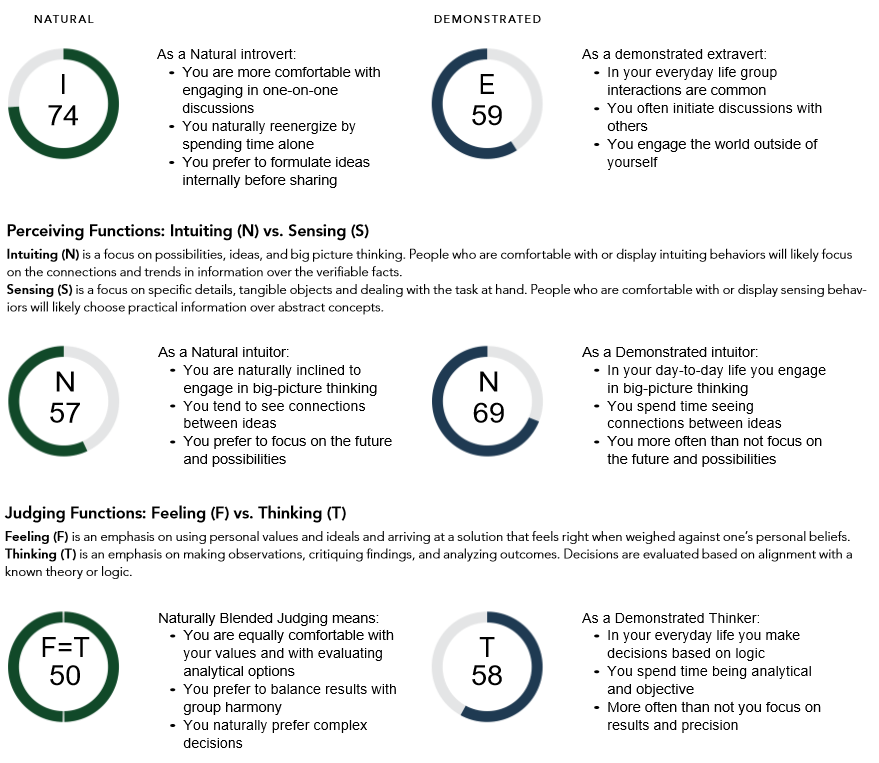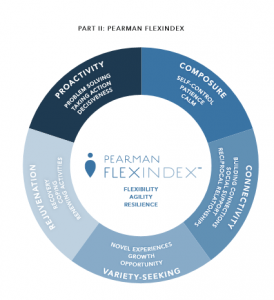Pearman or MBTI?
The world has two rich and valid Type assessments–the MBTI and the Pearman Personality Integrator. But which tool is the better choice? First, a little history.
In 1921, Carl Jung published Psychological Types, a sweeping theory of human cognitive functioning and development. Complex and challenging to fully engage in its original writing, Type was made both more accessible and wildly popular with the development and wide distribution of Isabel Briggs Myers’ MBTI assessment, which became available to the public in the early 1970s. In the fifty years since its launch, the MBTI has become the most taken and referenced psychological/personality assessment in the world. Validated and used all over the world, the MBTI is the way most people learn about and use Jung’s theory of Psychological Type.
I adore the MBTI. It was the first self-assessment tool I ever took, and it made a deep and lasting impression on me. The MBTI was the energy behind my entry into training and consulting and the subject of the first book I ever published. While I will always be an enthusiastic supporter and user of the Myers-Briggs, I am also well aware that the tool leaves its users guessing and struggling in a number of ways that make the job of the trainers and coaches who depend on it more challenging. I love the MBTI, and it has limitations.
Since 2015, the world has had another Type tool to consider–the Pearman Personality Integrator. Seven years in development, the Pearman was authored by Roger Pearman, a long-time Type consultant, researcher, author and leadership development thought-leader. The Pearman is Roger’s attempt to produce an assessment that avoids the stumbling blocks and difficulties that the MBTI has always presented while also being an assessment that better and more faithfully brings the content and intent of Jung’s work to the world. In its scope and power, the Pearman is pretty compelling. So what is a Type trainer, coach or enthusiast to do–which tool is the better choice?
 Bottom Line: Which to choose?
Bottom Line: Which to choose?
What the MBTI offers that the Pearman does not
-
Core focus on the sort–what is your Type?
The purpose of the MBTI is to help you ascertain your Type preference on each of the four featured scales. The tool is designed to sort you (or help you sort yourself) into one of two buckets (S or N, T or F, etc). The MBTI does not–has never and psychometrically cannot–measure how much. There are no degrees or amounts–only a sort that is reported to some degree of confidence. From this perspective, the MBTI’s goal is quite simple and focused.
-
J/P Scale
Jung’s theory of Psychological Type contained three dichotomous scales (Extraversion and Introversion, Sensing and Intuition, and Thinking and Feeling). Myers–developing an implied thought within the text of Jung’s work–fleshed out a fourth dichotomy (Judging and Perceiving). Over the years, the J/P dichotomy has grown to be many people’s favorite part of the MBTI. If J/P data are wanted and expected, the MBTI is the tool you need.
-
Gateway to Type dynamics
While not covered in most introductions and overviews of the MBTI, at the core of Type theory is the dynamic relationship between all the mental functions within any given Type–the dominant, the auxiliary, the tertiary and the inferior functions. Myers’ goal with the clean sort of the MBTI was actually to enable a description of these Type dynamics. If you are interested in the powerful insights that come from this richly debated corner of Type theory, the MBTI is the only tool that will take you there.
-
Static Type
The MBTI yields a Type–a static profile that tells you “who you are” and how you most often “show up.” This profile can be tailored to leadership, communication or conflict style, or any number of other topics of interest. It is these profiles that so many MBTI fans want in the first place. Learning that you are an INFP or ESTJ–discovering your tribe–is the culminating result of the whole enterprise for so many who engage this kind of tool. If this kind of summary profile is what you are after, no tool does this better than the MBTI assessment.
-
Known, expected outcome
For so many clients, the Myers-Briggs is a known quantity–a comfortable old friend. “We do this in our program every year,” or “The conference would not be the same without the fun and interaction that the MBTI session brings.” If the comfort of what you (or your client) know(s) is what you seek, the MBTI has gone nowhere. Use it again (and again).
What the Pearman offers that the MBTI does not
-
Core focus on Type development
The MBTI seeks to sort you into one of 16 Types. The Pearman is about understanding the difference between what is natural for you and what you actually do (how you behave) in the world. The degree to which my behavior is NOT what comes naturally to me is the degree to which I’m stretched and stressed in my life or work. Learning how to manage and grow from these stretching stressors in life are the development goals at the heart of the Pearman.
-
Data on both natural preferences and demonstrated behaviors
The Pearman presents what we find more natural (hard-wired Type) as well as what we demonstrate (our behavior)–bypassing the common MBTI-generated push-back of “Why do I have to choose; I do both,” and “I do one at work but the other at home.” The Pearman’s output is immediately grasped by respondents who innately understand that we often find one thing natural, but for a host of reasons, end up doing something else.
 In addition, unlike the MBTI, the Pearman presents its data on a continuum, so not only do the data support a discussion between Extraverts and Introverts, but between Introverts who feel differing “degrees” of Introversion. This qualitative difference within a preference has long been a desired topic of discussion and avenue of exploration within Type training, but it is not allowed or supported by the MBTI. Now with the Pearman, that discussion can be engaged.
In addition, unlike the MBTI, the Pearman presents its data on a continuum, so not only do the data support a discussion between Extraverts and Introverts, but between Introverts who feel differing “degrees” of Introversion. This qualitative difference within a preference has long been a desired topic of discussion and avenue of exploration within Type training, but it is not allowed or supported by the MBTI. Now with the Pearman, that discussion can be engaged.
-
Quantification of all eight mental functions
The Pearman measures and reports how natural and demonstrated are each of the eight mental functions (extraverted Sensing, introverted Feeling, etc). Never before has a Type tool produced data on the individual mental functions.
-
Avoidance of label and static view of Type
Many have long chaffed under the MBTI’s labels and static outcome, preferring a more fluid approach to self-awareness and development. The visual of the Type Table to these folks is repellent. For these learners, the Pearman offers an approach to Type that explores each component of Type separately (what is natural and what is demonstrated). Nowhere does the Pearman “identify” or profile you. There are no boxes or static labels of any kind. If you are after an announced Type, the Pearman will feel like a bell that never rings, but if you are after a development tool that gives you a handle on your own drivers and functioning while also suggesting an array of next steps and developmental actions, the Pearman is what you are looking for.
Many OKA clients have identified the FlexIndex as their favorite feature of the Pearman. The FlexIndex is a measure of resilience–your flexibility or cognitive agility. With the Type-focused portion of the Pearman emphasizing the stretch between what is natural and what is demonstrated, the FlexIndex is provided to illuminate the tendency and ability we each have to deal with these life stressors. Proactivity, Composure, Connectivity, Variety Seeking and Rejuvenation–these are the sub-scales of the Pearman’s FlexIndex.
-
New kid on the block
Lastly, but not to be discounted is the fact that the Pearman is new and innovative. It’s the shiny new thing. For every client I have who wants the MBTI because its familiarity are established and comforting, I have at least one other client who says, “so what tool do you suggest . . . and do NOT say the MBTI–I’m tired of that.” Independent of its many psychometric assets, the Pearman is fresh and new, and that is a selling point (to many) all its own.
MBTI Users and Lovers
 Curious about the Pearman?
Curious about the Pearman?


Leave a Comment